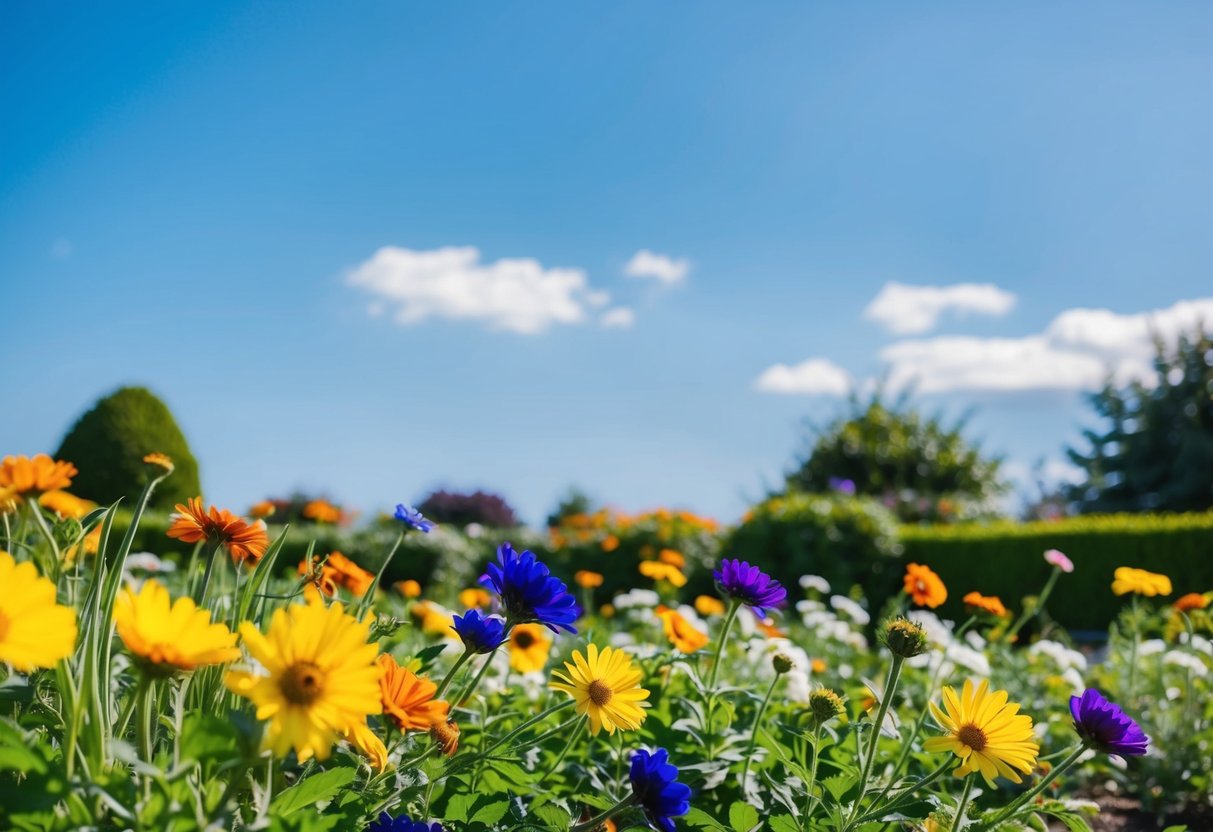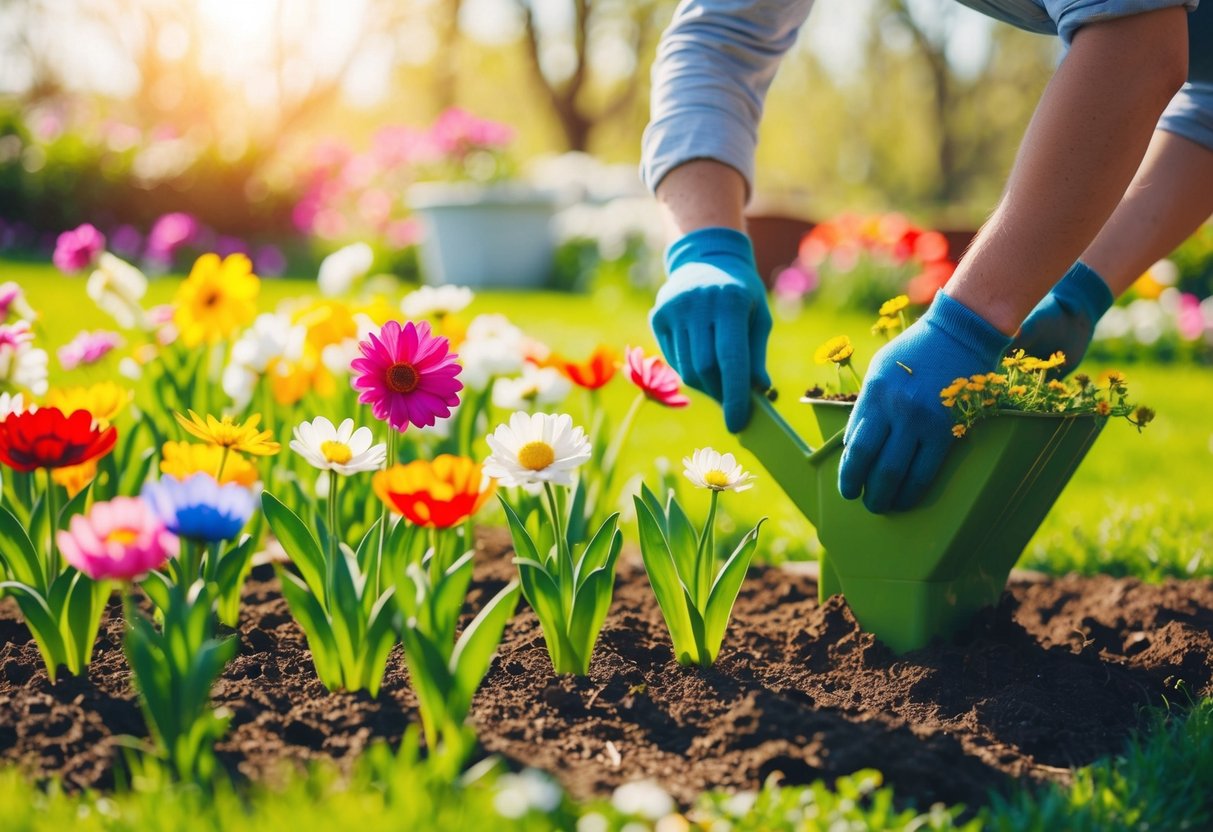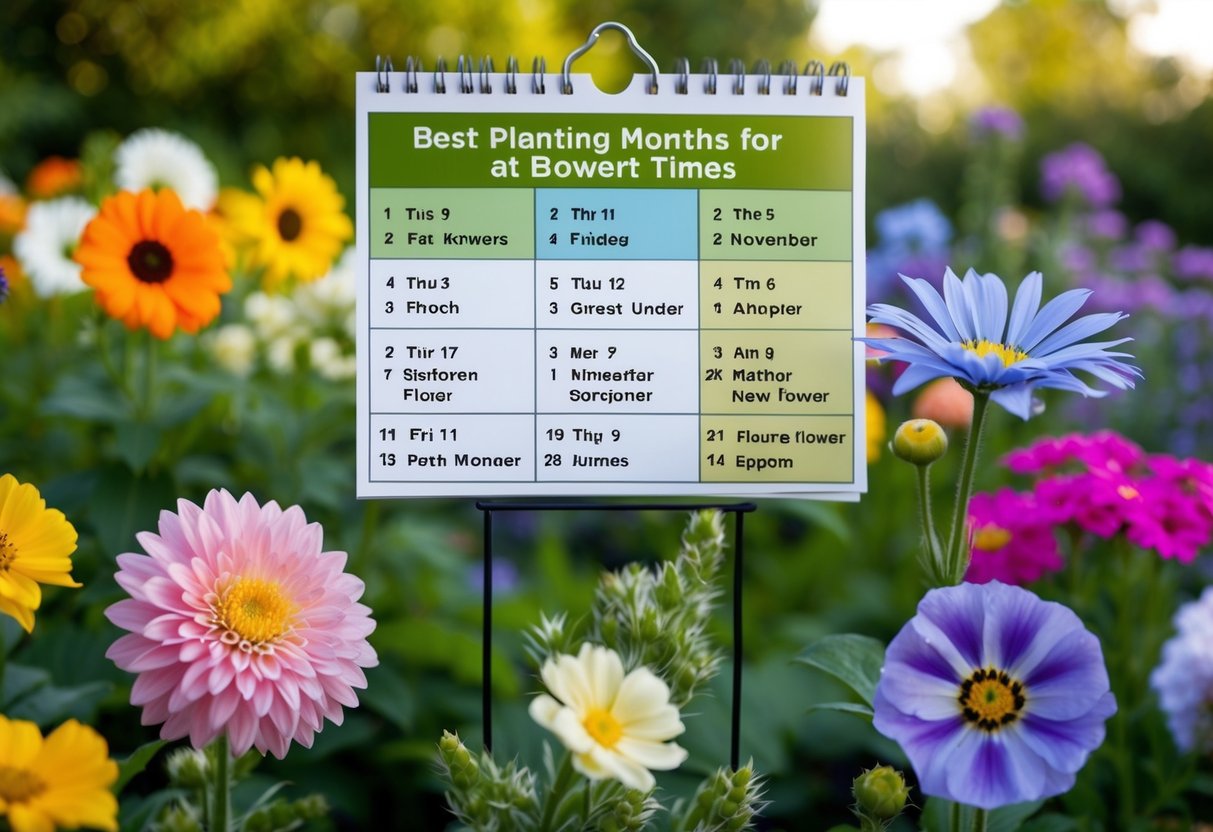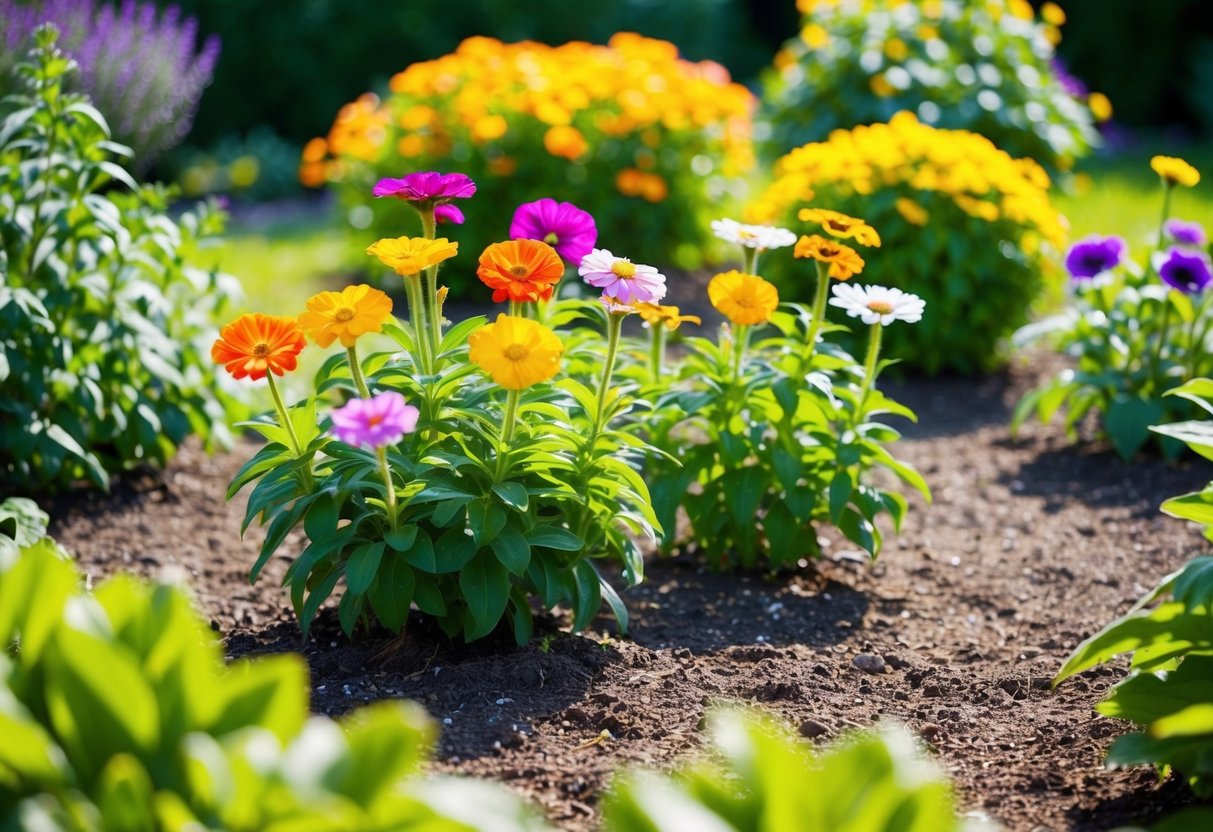What Month Is the Best Time to Plant Flowers? A Seasonal Guide
Choosing the right month to plant flowers can make a big difference in your garden’s success. While it might seem tricky at first, it’s actually quite simple once you know what to look for.
In general, spring and fall are excellent times for planting flowers. These seasons offer mild temperatures, making it easier for plants to establish roots before facing extreme weather.

Spring is especially popular for planting because nurseries are filled with vibrant options and the weather encourages plants to grow. If you decide to plant in spring, make sure to choose frost-tolerant varieties early on, especially if you live in an area with late frosts.
Once the risk of frost has passed, you can add more delicate flowers to your garden.
Fall is another great option, especially for perennials. Planting in the fall lets flowers develop strong roots, allowing them to bloom beautifully in spring. The soil is often still warm from summer, providing a good environment for growth.
Understanding Planting Seasons

Planting flowers at the right time is crucial for their growth and bloom. The climate and frost dates play a big role in deciding when to plant different types of flowers.
Importance of Climate and Hardiness Zones
Your local climate greatly affects which flowers will thrive in your garden. The world is divided into hardiness zones based on the average minimum temperature for each area.
Knowing your zone helps you pick plants that will survive the coldest part of the year. For example, if you live in a warmer zone, you might be able to plant flowers earlier in the spring because the winter frosts end sooner.
Using a planting guide specific to your hardiness zone will help you time your planting so that your flowers have the best chance to grow strong and healthy.
Frost Dates and Their Role in Planting
Frost dates are essential in planning when to plant your flowers. The last frost date in spring is when you can safely plant flowers without risking frost damage.
If you plant flowers too early, they might not survive a late frost. On the other hand, waiting too long after the last frost date might shorten the growing season.
It’s also important to think about the first frost date in autumn. Plant flowers early enough so they have time to establish roots before cold weather arrives. This helps your garden stay vibrant longer.
Selecting the Right Flowers to Plant

Choosing the right flowers means thinking about how long they live and what they need to grow well. You’ll also want to match their blooming times with the sun and shade in your garden.
Differences Between Annuals and Perennials
When picking flowers, deciding between annuals and perennials is important. Annuals bloom for one season and need replanting each year. They are great for adding seasonal color and consist of favorites like marigolds and petunias.
Perennials come back year after year, offering a reliable backbone for your garden. Think about blooming perennials like daylilies and hydrangeas. These flowers may require a bit more attention at first but can be low-maintenance after they establish.
A mix of both can bring constant beauty, combining lasting structures with splashes of temporary color.
Considering Bloom Times and Sun Exposure
Flowers have different bloom times, so coordination will keep your garden lively all year. For early spring, flowers like pansies and violets bring life after winter. Summer favorites such as daisies and sunflowers keep the garden vibrant.
Full sun plants, like lavender, need at least six hours of sunlight. In contrast, shade garden picks such as hostas and ferns thrive with less direct light. Balance these needs with your site’s light conditions. Using a planting calendar can guide you to choose the right species for your space. Understanding your garden’s microclimate will help you plan a flourishing garden.
Optimal Planting Times for Popular Flowers

Choosing the right time to plant flowers can make your garden thrive. Spring brings the perfect moment for bulbs like tulips and daffodils. Summer is ideal for planting roses and sunflowers, ensuring vibrant blooms. As autumn approaches, you can plant chrysanthemums and asters for a colorful display.
Spring-Flowering Bulbs: Tulips and Daffodils
Tulips and daffodils are some of the most popular spring-flowering bulbs. The best time to plant these bulbs is in the fall, around mid to late October. This allows them to establish roots before the ground freezes.
Both tulips and daffodils thrive in well-drained soil and require full sun or partial shade.
It’s a good idea to plant these flowers about 6-8 inches deep. You want to space them about 4-6 inches apart. This gives them plenty of room to grow and flourish. Once planted, they need regular watering until the ground freezes. These bulbs will sprout when the weather warms, bringing vibrant flowers to your garden.
Summer Favorites: Roses and Sunflowers
Roses are beloved for their stunning blooms and fragrance. The best time to plant roses is in early spring, just after the last frost. This timing ensures that roses have a full growing season to develop strong roots. They do best in well-drained soil with at least six hours of sunlight daily.
Sunflowers are another summer favorite. You should plant them in late spring when the soil has warmed. These bright flowers enjoy direct sunlight and grow tall very quickly.
It’s important to plant sunflower seeds about 1 to 2 inches deep and space them about 6 inches apart. When you provide them with enough water, they’ll reward you with cheerful blooms.
Autumn Surprises: Chrysanthemums and Asters
Chrysanthemums and asters are perfect for adding color to your fall garden. The best time to plant these is in the early spring or late summer.
When planting chrysanthemums, ensure they’re in fertile, well-drained soil and get plenty of sunlight. They need a spot that receives about six hours of sun each day.
Asters, known for their star-shaped flowers, thrive in similar conditions. Plant them in moist soil with access to full sunlight. Their blooms attract butterflies and brighten up gardens just as summer ends. With minimal care, these plants will enliven your garden with hues of pink, purple, and white.
Preparing Your Garden for Planting

Getting your garden ready for planting involves understanding soil quality, ensuring proper drainage, and knowing when to start seeds indoors.
Pay attention to the type of soil you have and make amendments as needed to create a thriving environment for your plants.
Soil Quality and Preparation
To begin, test your soil to understand its pH and nutrient content. You can get a soil testing kit from a gardening center.
Ideally, your soil should be slightly acidic to neutral for most flowers. If your soil is too acidic, adding lime can help balance it. Conversely, if it’s too basic, sulfur can lower the pH.
Improving soil quality involves adding organic matter like compost, which enhances nutrients and helps retain moisture. This step is vital for plant flowers, as they need rich soil to support growth.
Regularly turning the soil and removing weeds ensures it remains loose and fertile.
The Importance of Well-Drained Soil
Well-drained soil is crucial for preventing waterlogging, which can damage or rot plant roots.
To check if your soil drains well, dig a hole about 12 inches deep and fill it with water. If the water drains within a few hours, you have good drainage.
Improving drainage may require mixing in sand or building raised beds if your soil is clay-heavy. Raised beds provide better control over soil composition and drainage, making them a smart choice for tricky soil types. Consult a gardening center for materials and advice.
When to Use Starting Seeds Indoors
Starting seeds indoors offers a head start for your plants, especially for those with long germination periods.
It’s best to begin this process 6-8 weeks before your area’s last frost date.
Use seed trays or small pots with sterile starting mix to ensure healthy growth. Place them in a warm area to keep the soil temperature ideal for germination.
Once seedlings appear, provide them with ample light to promote strong growth. A sunny window or grow lights work well.
Gradually acclimate them to outdoor conditions by taking them outside for a few hours each day. This step, known as hardening off, prepares them for a successful transition to the garden.
Maintaining Your Garden After Planting

Taking care of your garden after planting is key to ensuring healthy growth and vibrant blooms. Focus on proper watering and fertilizing techniques and learn how to prevent and manage transplant shock to keep your garden thriving.
Watering and Fertilizing Techniques
Watering your garden properly is crucial for healthy plant growth. When you plant flowers, make sure to water deeply but not too often. This encourages deep root development.
For established plants, like lavender and butterfly bush, you might need to water them less frequently since they are often drought-tolerant.
Ensure your flowers get enough sunshine and nutrients. Fertilize in the early morning or late afternoon. Choose a fertilizer suited to your plants’ needs.
For new spring planting, use a balanced fertilizer. If you’re dealing with fall planting, make sure the soil is warm enough to help the roots absorb nutrients.
Preventing and Managing Transplant Shock
Transplant shock can make your flowers wilt or stunt their growth. To avoid this, water the plants well a day before moving them. This helps reduce stress during the transition.
For example, when planting in spring, make sure the soil is well-prepared and moist.
After you’ve planted, shield them from direct sunlight for a few days. This gives them time to adjust to their new environment.
If signs of shock appear, such as yellowing leaves, increase watering and reduce their exposure to harsh conditions. This will help your plants recover and continue to flourish.







